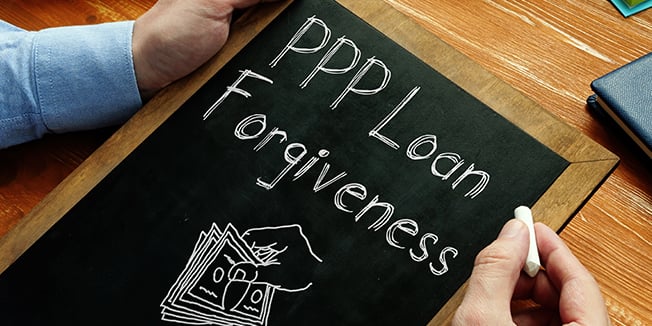
Late Tuesday night (1/19/21), the SBA published an “Interim Final Rule on Loan Forgiveness Requirements and Loan Review Procedures as Amended by the Economic Aid Act”. In addition, they issued updated Loan Forgiveness Applications and Instructions for Form 3508S (Which can now be used for loans of $150,000 or less), Form 3508EZ and Form 3508. Much of the revised Interim Final Rule (IFR) was information previously known and published.
Some highlights and updates of the new Interim Final Rule include:
- The IFR applies to ALL PPP loans for which loan forgiveness payment had not been remitted by SBA as of December 27, 2020.
- The IFR clarifies that payroll costs that are qualified wages considered to claim the Employee Retention Credit are not eligible for loan forgiveness.
- The IFR provides more detail on additional costs eligible for forgiveness which include:
- Covered operations expenditures;
- Covered property damage costs;
- Covered supplier costs;
- Covered worker protection expenditures.
- The IFR explains that to achieve forgiveness on Second Draw PPP Loans in excess of $150,000, the borrower must submit its loan forgiveness for the First Draw Loan before or simultaneously with the loan forgiveness application for the Second Draw Loan.
- The IFR clarifies that the covered period for use of PPP loan funds has changed for all first and second draw loans that have not already been forgiven. The covered period begins on the date of the loan origination and ends on a date selected by the borrower that occurs no earlier than 8 weeks after loan origination and no later than 24 weeks after loan origination. (i.e., any period selected between 8 and 24 weeks). The covered period for first and second draw loans cannot overlap.
- The IFR reaffirms that rent payments paid to a related party are eligible for forgiveness but only to the extent of mortgage interest paid on the rented property during the covered period. (Example – tenant pays $5,000 a month to their related party real estate LLC in which the real estate LLC pays $4,000 in principal and $1,000 in interest on the mortgage of the building. Only $1,000 of rent paid is eligible for forgiveness.)
- The IFR reaffirms and explains the Safe Harbor Exemptions for FTE Reductions:
- Borrowers are exempted from the loan forgiveness reduction arising from a proportional reduction in FTE employees during the covered period if the borrower is able to document in good faith the following: (1) an inability to rehire individuals who were employees of the borrower on February 15, 2020; and (2) an inability to hire similarly qualified individuals for unfilled positions on or before December 31, 2020 (or, for a PPP loan made on or after December 27, 2020, not later than the last day of the loan’s covered period).
- Borrowers are also exempted from the loan forgiveness reduction arising from a reduction in the number of FTE employees during the covered period if the borrower is able to document in good faith an inability to return to the same level of business activity as the borrower was operating at before February 15, 2020, due to compliance with requirements established or guidance issued between March 1, 2020 and December 31, 2020 (or PPP loans made after December 27, 2020, not later than the last day of the loan’s covered period) by Federal or State regulatory agencies related to health and safety standards.
- The IFR explains borrowers are not to be double penalized for loan forgiveness if a reduction in salary/wages is a direct result of a reduction in the number of employees. The salary/wage reduction applies only to a decline in wages/salary that is not attributable to the FTE reduction.
- The IFR explains that The Small Business Act gives borrowers an opportunity to cure reductions in FTEs and salary/hourly wages if those reductions are eliminated and restored no later than December 31, 2020 (or for loans made after December 27, 2020 no later than the last day of the loan’s covered period).
- The IFR affirms that borrowers with a loan of $50,000 or less are exempt from any FTE or salary/wage reduction to the extent they can substantiate full appropriate use of the PPP funds.
As was the case with the PPP program when it was initially introduced back in March 2020, the SBA in conjunction with Treasury continue to issue additional guidance in the form of IFRs as well as FAQs regarding PPP loan forgiveness and additional PPP round 1 and 2 funding. There are many specifics that we still do not have clear and concise guidance on as it relates to the PPP program. We will continue to check for SBA and Treasury updates and keep you updated as more information becomes available.
